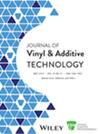Copper-doped ZnO-chitin-cellulose mesoporous nanostructures for enhanced structural, optoelectronic, and antimicrobial efficacy
Abstract
This study shows the development and characterization of innovative mesoporous Cu-doped ZnO-chitin-cellulose nanostructures, leveraging a semi-dissolved chitin templating approach to reinforce their structural and functional properties. This innovative approach enhances the structural and functional properties of the composites, demonstrating significant advancements in optoelectronic and antimicrobial performance. FTIR peaks at 971, 787, 621, and 482 cm−1 suggest metal-oxygen vibrations and interactions between Zn, Cu ions, and functional groups in the chitin-cellulose matrix. The chitin-cellulose and ZnO-chitin-cellulose composite were influenced by the presence of Cu ions, by the appearance of absorption peaks at 240 and 303 nm. Incorporating Zn and ZnCu ions altered the composite's bandgap, reducing it from 3.6 to 2.75 eV, thereby enhancing its optical properties. Band gap analysis manifests a decrease in energy gap attributed to Cu doping and the interaction between Cu-3d and O-2p states. The antimicrobial efficacy of chitin-cellulose composites loaded with Zn and ZnCu was significantly enhanced compared to the unloaded samples, with the loaded composites achieving nanoparticle sizes ranging from 26 to 32 nm, respectively. Significant antibacterial activity was observed, with zones of inhibition measured at 26–29 ± 1 mm for E. coli, 29–30 ± 1 mm for B. subtilis, 26–24 ± 1 mm for C. albicans, and 30–32 mm ± 1 for A. fumigatus. The addition of Cu-doped ZnO into the chitin-cellulose matrix significantly enhances the composite's surface area, band gap, photonic activity, and antimicrobial activity, further amplifying its functionality. These advanced properties position the materials as highly suitable for diverse critical applications, including active packaging, drug delivery systems, optoelectronic, and UV shielding solutions.
Highlights
- Innovative mesopores Copper@ ZnO-Chitin-Cellulose nanostructures.
- Nanoparticle ratios influence the properties of chitin-cellulose nanostructures.
- Cu@ ZnO enhances absorption and decreases the band gap, providing strong UV protection.
- Bioactive mesoporous structures display strong antimicrobial efficacy for biomedical use.





 求助内容:
求助内容: 应助结果提醒方式:
应助结果提醒方式:


